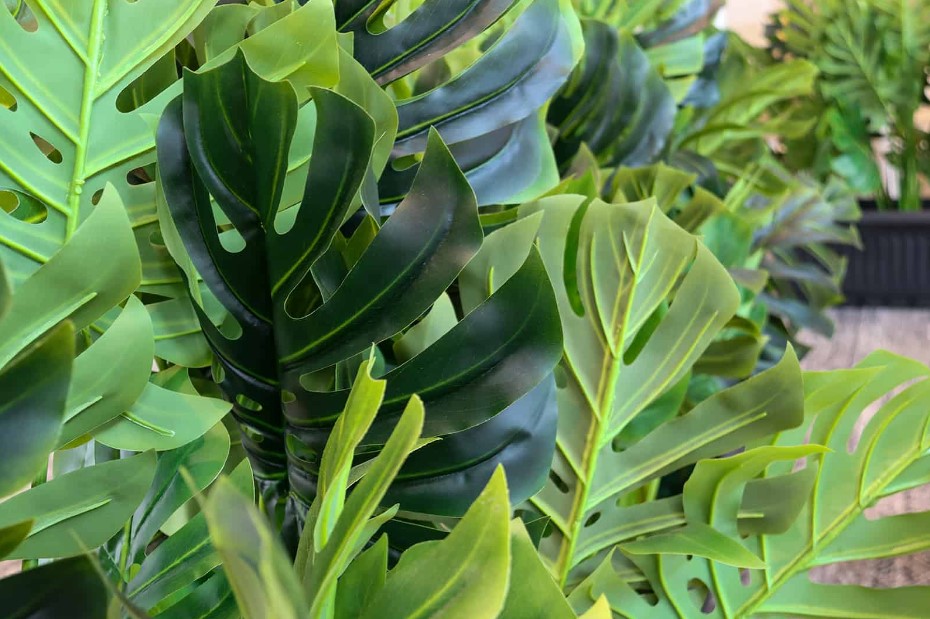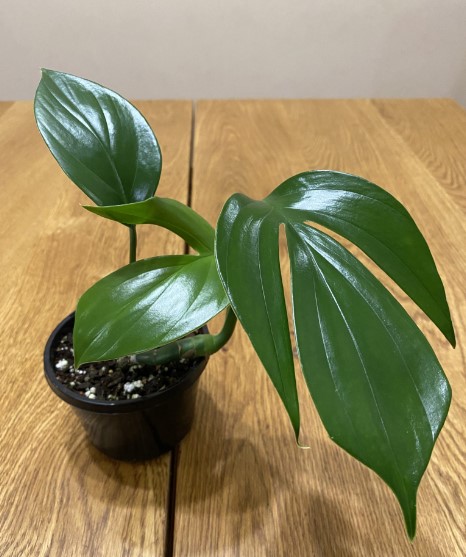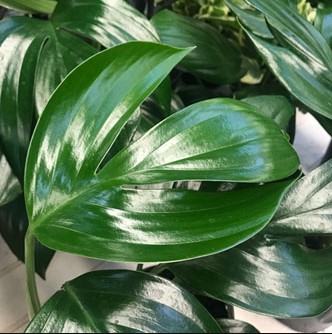Dragon tail plant, scientifically known as Epipremnum pinnatum, are native to tropical regions and belong to the Araceae family. With their elongated heart-shaped leaves resembling a dragon’s tail, these plants add an exotic touch to any space. The long trailing vines and glossy green foliage make them a favorite choice for those seeking visually appealing indoor plants.
Benefits of Dragon Tail Plants:
Beyond their aesthetic appeal, dragon tail plants offer several benefits that contribute to a healthier and more inviting environment. Let’s explore some of these benefits:
- Air Purification: Dragon tail plants are known for their air-purifying qualities. They absorb harmful toxins such as formaldehyde and benzene, commonly found in indoor environments, thus improving air quality and promoting better respiratory health.
- Aesthetics and Decor: With cascading vines and distinctive leaves, dragon tail plants are natural decor elements, adding beauty and elegance to any room or office space. They can be displayed in hanging baskets, on shelves, or trained to climb a trellis for a stunning visual effect.
- Stress Reduction: Research suggests that being around plants can help reduce stress levels and improve overall well-being. With their calming presence and soft green foliage, dragon tail plants create a tranquil atmosphere, promoting relaxation and serenity.

Choosing the Right Environment:
Creating the right environment is essential to ensure your dragon tail plant’s optimal growth. Consider the following factors:
Light Requirements: Dragon tail plants thrive in bright, indirect light. Avoid exposing them to direct sunlight as it may scorch the leaves. Place them near windows with sheer curtains or in well-lit areas of your home or office.
Temperature and Humidity: Maintain a temperature range of 60-85°F (15-29°C) for your dragon tail plant. They prefer moderate humidity, so misting the leaves or using a humidifier can help create an ideal environment.
Placement: Avoid placing dragon tail plants in areas with cold drafts or near air conditioning vents, as they prefer stable temperatures and mild air circulation.
Planting and Potting:
When planting and potting your dragon tail plant, follow these steps:
- Choosing the Right Container: Select a well-draining pot that allows excess water to escape. Consider the size of your plant, ensuring the pool provides ample space for growth.
- Soil Selection: Use a well-draining potting mix suitable for tropical plants. Peat moss, perlite, and compost blend well for dragon tail plants.
- Transplanting: If your dragon tail plant outgrows its current pot, gently remove it and replant it in a larger container, not damaging the roots.
Watering and Moisture:
Proper watering techniques are essential for the health of your dragon tail plant. Follow these guidelines:
- Watering Frequency: Allow the top inch of soil to dry out before watering your dragon tail plant. Overwatering can lead to root rot, while underwatering may cause stress to the plant. Aim for a balance and adjust watering according to the season and environmental conditions.
- Testing Soil Moisture: Before watering, check the soil’s moisture level by inserting your finger into the top inch of the ground. If it feels dry, it’s time to water. If it’s still moist, wait a little longer.
- Mist and Humidity: Dragon tail plants appreciate moderate humidity levels. Regularly misting the leaves or placing a tray of water near the plant can help create a humid microclimate.

Fertilizing and Pruning:
To maintain the health and appearance of your dragon tail plant, follow these practices:
- Fertilizer Selection: Use a balanced liquid fertilizer formulated for houseplants. Feed your dragon tail plant every 2-4 weeks during the growing season (spring and summer) and reduce fertilization during the dormant period (fall and winter).
- Pruning Tips: Trim back leggy or overgrown stems to encourage bushier growth. You can also shape the plant by pruning the trailing vines to maintain its desired size and appearance.
Common Issues and Troubleshooting:
While dragon tail plants are generally resilient, they can encounter a few common issues. Here’s how to address them:
- Pests and Diseases: Look for common pests like spider mites or mealybugs. Treat infestations with natural or organic insecticides and regularly inspect the plant for signs of disease, such as yellowing leaves or spots.
- Yellowing Leaves: Yellow leaves indicate overwatering, underwatering, or nutrient deficiencies. Adjust your watering routine accordingly and consider fertilizing if the plant lacks essential nutrients.
- Root Rot: Overwatering or poorly draining soil can lead to root rot. To prevent this, ensure proper drainage by using well-draining soil and pots with drainage holes. If root rot occurs, trim away affected roots and repot the plant in fresh soil.
Propagation:
Expand your collection of dragon tail plants through propagation. Follow these steps:
- Propagation Methods: Dragon tail plants can be propagated through stem cuttings or division. Take a healthy cutting with at least two leaves and place it in a glass of water or directly in moist soil. Division can be done by separating rooted sections of the plant.
- Propagation Tips: Consider using a rooting hormone to encourage faster root development. Provide warmth, humidity, and indirect light to enhance the success rate of propagation.

Conclusion:
Congratulations! You are now equipped with the knowledge to care for your dragon tail plant and enjoy its captivating beauty. Remember to provide the right environment, properly water properly, fertilize, and promptly address any issues. With their air-purifying benefits and aesthetic appeal, dragon tail plants will bring joy and tranquility to your indoor spaces. Happy gardening! Read article about Calathea Setosa and Anthurium Regale in Avi Hoffman.
FAQ
A: The dragon’s tail plant, known scientifically as Epipremnum pinnatum, serves multiple purposes. The plant is mainly used as an ornamental plant because of its attractive, trailing tendrils and unique dragon tail-shaped leaves. In addition, the plant provides air-purifying benefits by filtering toxins from the surrounding air, making it a popular choice for improving indoor air quality. In addition, its aesthetic appeal makes it a great asset to furnish homes, offices, or other spaces where a touch of greenery is desired.
A: The dragon’s tail plant is generally considered easy to care for, making it suitable for novice and experienced plant enthusiasts. Known for its resilience and adaptability, this plant tolerates various indoor conditions. However, she thrives best in bright, indirect light and moderate humidity. Dragontail plants have average water requirements and should be watered when the top inch of soil is dry. The dragon’s tail plant can flourish with minimal effort with the right light, water, and occasional fertilization.
A: The rarity of the dragon’s tail plant may vary depending on your location and the availability of plant nurseries or online retailers. While it may not be as common as some popular houseplants, it is not considered extremely rare either. With the increasing interest in houseplants, the dragon’s tail plant has gained popularity and can often be found in specialist plant stores or online marketplaces. However, checking with local nurseries or plant enthusiasts for availability in your area is always a good idea.







